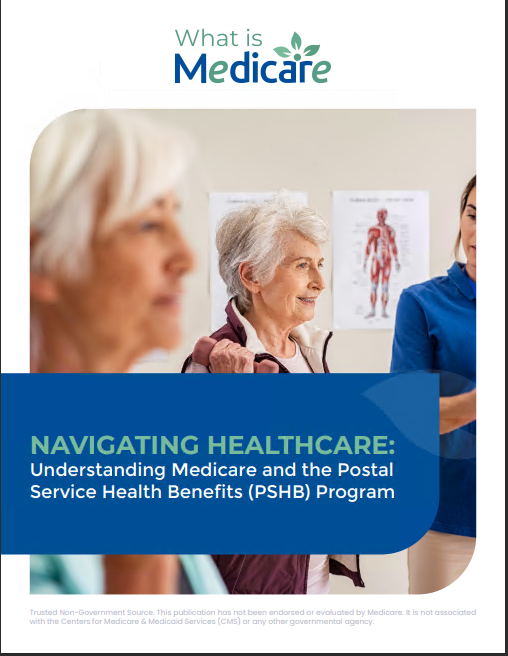Key Takeaways
-
Medicare enrollment mistakes can lead to unexpected costs, coverage gaps, or penalties, so it’s crucial to fully understand your options before making a decision.
-
Missing deadlines, misunderstanding coverage rules, and not considering all parts of Medicare could result in long-term financial consequences.
Not Signing Up for Medicare on Time
Enrolling in Medicare isn’t automatic for everyone, and missing your initial enrollment period (IEP) can result in late penalties that stick with you for life.
-
When to Enroll: Your IEP begins three months before your 65th birthday, includes your birth month, and ends three months after. If you don’t enroll during this window and don’t have qualifying coverage, you may face late penalties.
-
Consequences of Missing the Deadline:
-
Medicare Part B: A permanent 10% increase in your monthly premium for every year you delay enrollment without having other coverage.
-
Medicare Part D: A penalty calculated based on how long you went without creditable prescription drug coverage.
-
-
Who Gets Automatically Enrolled? If you’re already receiving Social Security benefits, you’ll be enrolled in Medicare Parts A and B automatically. If not, you must sign up yourself.
Choosing the Wrong Medicare Plan for Your Needs
Many people assume Medicare covers everything or that all plans work the same way. This assumption can lead to choosing the wrong coverage and facing unexpected costs.
-
Medicare Has Multiple Parts:
-
Part A (Hospital Insurance): Covers inpatient hospital stays, skilled nursing facility care, and some home healthcare.
-
Part B (Medical Insurance): Covers doctor visits, outpatient care, preventive services, and medical equipment.
-
Part D (Prescription Drug Coverage): Helps cover the cost of prescription medications.
-
-
Why It Matters: Choosing a plan that doesn’t align with your health needs can leave you with high out-of-pocket costs for services or medications you regularly use.
-
What You Can Do: Compare your options carefully and review coverage details annually to ensure your plan still meets your needs.
Ignoring Medicare’s Late Enrollment Penalties
Thinking you can sign up for Medicare anytime without penalties is a costly mistake. Late enrollment fees can add up quickly and last for as long as you have Medicare.
-
Part A Late Enrollment Penalty: If you don’t qualify for premium-free Part A and delay signing up, you’ll pay a 10% higher monthly premium for twice the number of years you could have enrolled but didn’t.
-
Part B Late Enrollment Penalty: A 10% increase in your monthly premium for every 12-month period you were eligible but didn’t enroll.
-
Part D Late Enrollment Penalty: This fee is calculated by multiplying 1% of the national base beneficiary premium by the number of months you went without coverage. The penalty is added to your monthly premium permanently.
-
How to Avoid These Penalties: If you have employer coverage, ensure it’s considered “creditable” by Medicare to avoid late fees. If not, enroll as soon as you’re eligible.
Assuming Employer Coverage is Always Better
Many people delay enrolling in Medicare because they believe their employer-provided health insurance is a better deal. However, this can be a mistake depending on the size of your employer and the type of coverage offered.
-
How Employer Size Affects Medicare Enrollment:
-
If you work for a company with fewer than 20 employees, Medicare is your primary coverage, and your employer insurance becomes secondary. You need to enroll in Medicare when first eligible to avoid gaps in coverage.
-
If your company has 20 or more employees, your employer’s health plan remains primary, and you can delay enrolling in Medicare without penalties.
-
-
Coverage Differences to Consider:
-
Employer plans often include family coverage, while Medicare only covers individuals.
-
Some employer plans offer better prescription drug coverage than Medicare Part D.
-
-
When You Should Transition to Medicare: Even if you’re still working, compare costs and benefits to determine if Medicare is a better option.
Not Reviewing Your Coverage Annually
Many Medicare enrollees assume their current plan will always meet their needs. However, plans change every year, and failing to review your coverage could result in unexpected costs.
-
Annual Medicare Open Enrollment Period: Runs from October 15 to December 7 each year. During this time, you can:
-
Switch between Original Medicare and a private plan.
-
Change your prescription drug plan.
-
Update your coverage based on new healthcare needs.
-
-
Why You Should Review Your Plan:
-
Costs (premiums, deductibles, and co-pays) may increase.
-
Your preferred doctors or pharmacies may no longer be in-network.
-
Prescription drug formularies can change, leading to higher costs for medications you take.
-
-
What You Can Do: Always read your Annual Notice of Change (ANOC) letter to understand any modifications to your plan and compare other available options.
Taking the Next Steps to Protect Your Healthcare Choices
Making Medicare enrollment mistakes can cost you more than you expect. Whether it’s avoiding late penalties, picking the right coverage, or reviewing your plan every year, being proactive ensures you get the benefits you deserve without unnecessary expenses. If you need help navigating Medicare options, reach out to a licensed agent listed on this website for professional advice.









